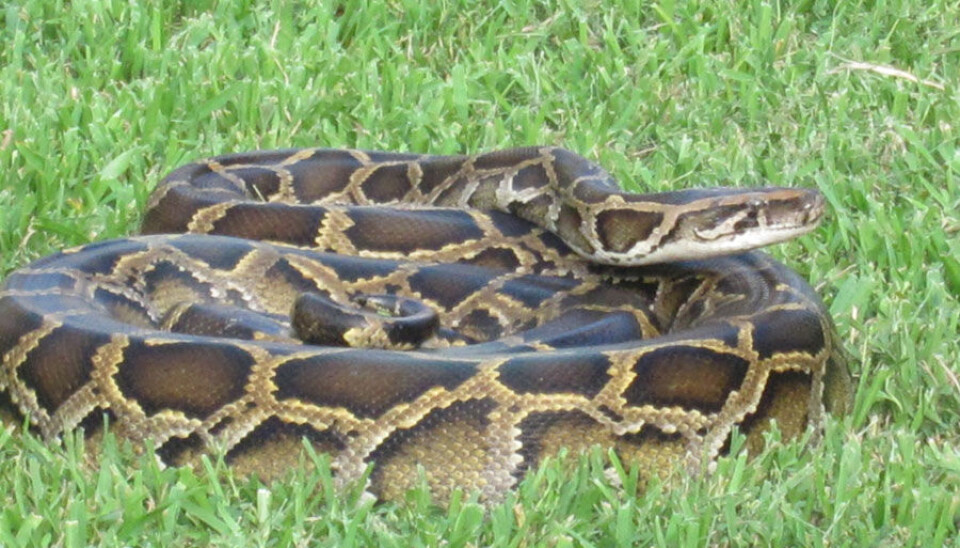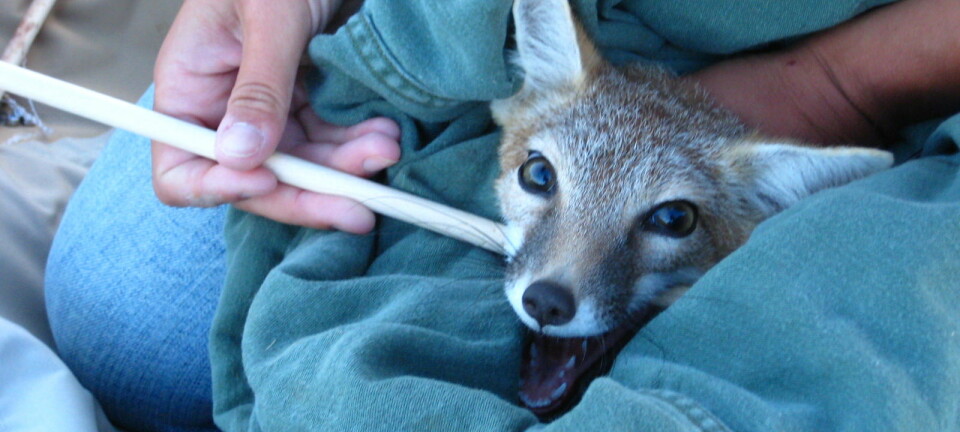An article from Norwegian SciTech News at NTNU

Thwarting invaders
A new method can predict potential environmental risks from invasive species such as the Burmese python.
Denne artikkelen er over ti år gammel og kan inneholde utdatert informasjon.
When American scientists broke the news in early 2012 that the Burmese python, a non-native species in the Florida Everglades, had eradicated up to 90 per cent of the raccoons, white-tailed deer and possums in parts of the Everglades National Park, the outcry was immediate and intense. The US Fish and Wildlife Service immediately made importing the snakes illegal, and in March 2012, it will be illegal to transport them across state lines.
Critics, however, argue that mammal declines show the damage is mostly done – but what if you could figure out how dangerous an introduced species will be in its new environment before the damage takes place? The ability to foresee the future has mostly eluded biologists and land managers – until now.
A coalition of researchers from the Norwegian University of Science and Technology (NTNU) and staff from the Norwegian Biodiversity Information Centre have created a unique quantitative method that enables researchers and others to assess the environmental risks posed by non-native species. While the method is tailored to the Norwegian environment, it can easily be adapted to other countries, and fills a vital need internationally for a quantifiable, uniform approach to classifying and assessing alien species, the developers say.
“This provides an objective classification of these species’ potential impact on the Norwegian environment. We relied on much of the same principles as are used in the preparation of the ‘Red List’ of endangered and threatened species,” says Professor Bernt-Erik Sæther at NTNU’s Centre for Conservation Biology (CCB), who has spearheaded the development of the new methodology with the help of a coalition of other Norwegian scientists and Biodiversity Information Centre staff.
Rating risks
The method classifies species according to their reproductive ability, growth rate, individual densities, population densi¬ties, prevalence and their effect. This information allows the researchers to plot the risks posed by each species on two axes, one of which shows the likelihood of the species’ dispersal and ability to establish itself in the environment (along with its rate of establishment, if applicable) while the other shows the degree to which the alien species will affect native species and habitats.
Based on the combined values of the two axes, the species can be placed in one of five risk categories, from very high risk, to species with no known risk factors. While the classification scheme is now only in Norwegian, plans call for translating it into English, with the hopes that it can provide a useful international approach to assessing risks from alien species.
































